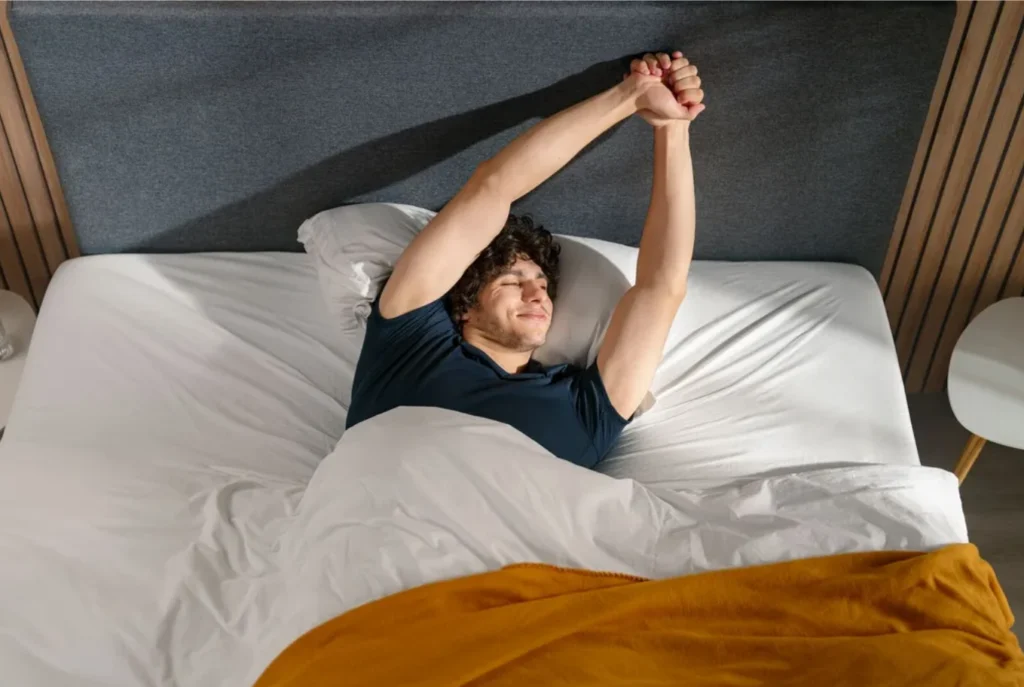At some point, every sleep-deprived adult looks back and wonders why they ever fought nap time as a kid. What once felt like punishment—lying in a dark room when you’d rather be on the playground—is now something most of us would gladly schedule into our busy days.
As it turns out, naps aren’t just for kids. When done right, they can offer major benefits for mental clarity, physical health, emotional well-being, and even work performance. But despite the science, napping still carries a bit of a stigma in some cultures, where productivity is king and rest is seen as lazy.
Let’s break that myth. This guide covers everything you need to know about naps: what they are, why they matter, the different types, the science behind them, and how they can work for you.
What Exactly Is a Nap?
The word “nap” comes from the Old English “hnappian,” meaning to sleep or doze. These days, we define it as a short period of sleep during the day — something babies, kids, older adults, and even stressed-out college students often enjoy.
But somewhere along the way, society decided that adults taking naps must be slacking off. In truth, the opposite is often the case. A well-timed nap can recharge your brain, boost creativity, improve memory, and even support heart health.
Famous fans of napping include:
-
Thomas Edison – kept nap cots in his lab and took brief rests daily.
-
Winston Churchill – swore by daily naps, saying they helped him get “two days in one.”
-
Salvador Dalí – used a “micro-nap” technique to spark creativity.
-
Eleanor Roosevelt – napped before speeches to recharge.
-
Albert Einstein – reportedly napped regularly and slept 10 hours a night.
Why Do People Nap?
People nap for lots of reasons—some intentional, some not:
-
Sleep deprivation – Catching up after a rough night or early morning.
-
Jet lag – Resetting your internal clock after a long flight.
-
Health reasons – Recovering from illness or just fighting off fatigue.
-
Enjoyment – Sometimes you nap simply because you love it.
Types of Naps
Not all naps are the same. Here’s a breakdown:
Emergency Naps
These happen when you’re suddenly hit with overwhelming tiredness. Think: falling asleep at your desk or crashing mid-study session. If this happens often, it could be a sign of chronic sleep deprivation.
Habitual Naps
These are part of your routine, like a toddler’s midday nap or a daily siesta in some cultures.
Planned Naps
These are strategic. You’re not tired yet, but you know you will be — like napping before a red-eye flight or a late-night event.
What Happens in the Brain During a Nap?
Sleep occurs in five stages, and naps can land you in different ones depending on how long you sleep:
-
Stage 1 – Light sleep. You’re just drifting off. Easy to wake.
-
Stage 2 – Slightly deeper. Brain activity slows down with bursts of activity called sleep spindles.
-
Stage 3 & 4 – Deep sleep. Harder to wake from. Your body restores and heals.
-
REM sleep – Dream time. Brain activity spikes. Important for learning and memory.
A full sleep cycle lasts about 90 minutes, and depending on nap length, you may or may not hit certain stages. That matters — a lot.
Comparing Nap Lengths
Not all naps are created equal. Here’s what you get from different durations:
-
Micro nap (a few seconds–5 minutes): Might not even notice it happened, but it can provide a quick boost to alertness and memory.
-
10–20 minutes (Power Nap): You stay in lighter sleep stages, making it easy to wake up feeling refreshed. Great for energy, focus, and motor skills.
-
30–60 minutes: You may hit deeper sleep, which can help with memory and decision-making—but you’ll probably feel groggy (thanks to sleep inertia) when you wake up.
-
90 minutes: A full sleep cycle including REM. This type of nap can improve creativity and emotional processing, but it might make falling asleep at night a bit trickier.
Are Naps Good for Your Brain?
Yes — and there’s research to prove it:
-
A 2002 study found naps improved perception and alertness more than caffeine.
-
In a 2010 UC Berkeley study, students who napped were better at learning and retaining information.
-
Other studies show improvements in verbal memory, motor skills, and even problem-solving after napping.
Potential Health Benefits of Napping
-
Boosts memory – A 45-minute nap helped participants in one study recall words better than those who didn’t nap.
-
Improves cognition – A study of Chinese adults 65+ found that regular nappers scored better on cognitive tests.
-
Elevates mood – Napping can help regulate emotions and reduce impulsivity.
-
Supports heart health – Nappers had lower risk of dying from heart disease in large-scale studies.
-
Lowers blood pressure – A midday nap can cause a measurable drop in blood pressure.
-
Enhances alertness – NASA found that a 26-minute nap boosted pilot alertness by 54%.
-
Boosts productivity – Companies like Google and Zappos have nap pods to help employees reset and work smarter.
-
Reduces fatigue – Fewer workplace mistakes, better focus, and lower risk of drowsy driving incidents.
So, Do Naps Actually Work?
Short answer: Absolutely.
Naps can restore energy, improve mental performance, and help your body recharge — especially when you’re not getting enough sleep at night. Studies even suggest naps are more effective than caffeine when it comes to learning and memory.
According to the American Sleep Association:
“Having a regular napping schedule may not only help you feel energized but may have health benefits too. Regular naps reduce stress and may decrease your risk of heart disease.”
Final Thoughts
Napping isn’t just a guilty pleasure — it’s a science-backed tool for better health, sharper focus, and emotional well-being. So the next time you feel that post-lunch crash coming on, don’t power through with another coffee. Take a nap. Your brain (and body) will thank you.



